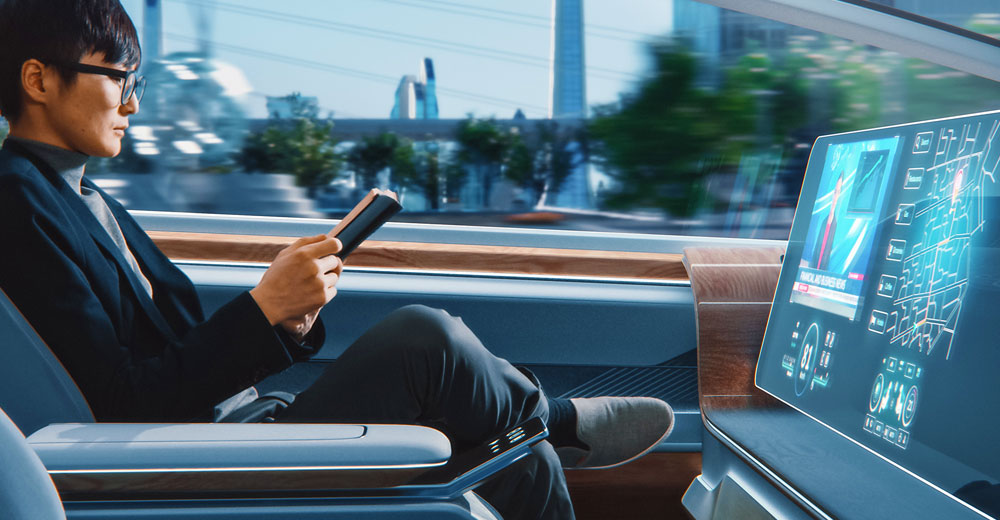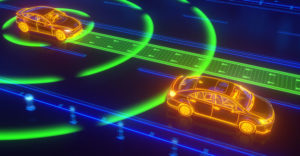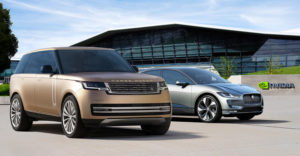I was in Israel last week to tour Intel’s impressive facilities there. While most of the trip was focused on Intel’s Israel Development Center (IDC), there was also a presentation on Intel’s Mobileye facility in Israel. This division, which will eventually spin into an IPO (a move that will have to wait until the market recovers), is the group that drove Intel’s autonomous car efforts.
At the end of the day, I got my first drive in a car that drove itself, and I will walk you through that experience in a moment. It is interesting to note that the opening presentations covered Intel’s recent supercomputer and quantum computer successes following their August rollout of Quantum Supremacy simulations.
It struck me that autonomous driving, which will largely go to market as electric cars — and grow from a minority to being the most vehicles on the road over the next decade — will address one of the most troubling problems with electric cars, which is that, while they should work better in high-density areas like cities, they currently don’t because of the lack of charging infrastructure.
Let’s talk about that this week — and we will close with my product of the week: one of my long-term favorite laptops that I carried on this trip, the Microsoft Surface laptop, which was designed to provide the market with a stronger alternative to the MacBook.
Electric Car Problems
I not only drive an electric car, a 2019 Jaguar I-Pace, but I’m also the moderator of the U.S. Jaguar I-Pace Forum.
It amazes me how different the experience with an electric car is from how those who don’t like electric cars often describe them. One of the big differences is that while electric cars have issues, the issues are around a magnitude less, based on forum activity, than in similarly advanced ICE cars. When there are problems, it’s with the systems like entertainment and security that the two types of cars share.
One of the recent messages that the folks fighting the electric car revolution are spreading is that electric cars don’t run on electricity; they run on batteries. Then they argue that electricity that charges the batteries comes from generating facilities that are powered by fossil fuels and thus not green at all.
Arguing that electric cars run on batteries is like arguing that gas-powered cars run on gas tanks.
While there are still a lot of electrical generation plants that run inefficiently (I should point out that crypto mining is creating significant electric capacity issues), there is an exceedingly high attach rate between those that have electric cars and those that have solar panels on their homes — and most people with electric cars charge them at home.
This last means that while using public chargers is painful, most of us rarely use them. For example, I have used those chargers four or five times in the three years I have owned an electric car. But I have a garage where I can put a charger.
People in cities don’t have garages, and public chargers are not only annoying to use, but they are also still relatively hard to find. This is a problem because electric cars are superior for short runs and traffic than they are for distance driving and speed. Thus, they should be better in cities and far cleaner to operate, but they remain impractical in these areas despite their inherent superiority.
There is a technology that could address this, and that is wireless charging, but putting it in at scale would require not only massive in-city rewiring but also tearing up streets where the technology would need to be installed. Governments haven’t been good at funding the maintenance of the infrastructure, let alone putting in new infrastructure that would also need to be maintained.
Autonomous Driving to the Rescue
Level 4 Autonomous Driving will allow cars to operate in self-driving mode.
We talk about being able to watch movies, read, or sleep while the car drives, but a big advantage of autonomous electric cars in cities is that they could drive to a remote location when not in use, charge, and then return when you need them.
No searching for on-street parking, which is often a huge problem in cities, and the cities could then put wireless charging or robotic electric chargers in parking structures, which would be much easier to implement, reduce the number of parked vehicles on the street, and reduce traffic.
This would, in turn, allow for better rideshare experiences. Owners could have their cars work as Uber-like taxis when they aren’t using them, effectively turning the vehicle into a profit center for families that can afford them. I am still not sure I would want my own car used that way, but it would give me the option should I choose to use it.
I once belonged to a car club where our cars were shared between drivers, allowing me to have the experience of owning a fleet of exotic cars without the related cost, but I quickly found that I mostly wanted to drive my own car, one of the first Jaguar F-Types, more than the true exotics I could otherwise drive because the fear of breaking and having to pay to repair the exotic took a lot of fun out of the experience, and, frankly, my car was simply more fun to drive.
But this idea of having the car put itself away, automatically charge itself, and then pick me up when I need to drive it is, for me, incredibly attractive. I hate searching for parking, having to remember where I parked the car, and sitting around in the car while charging it is not particularly attractive either.
When I return from my trip this week, my wife will have to get up late at night to pick me up at the airport because I don’t like leaving a car out in the weather for more than a couple of days. But with an autonomous car, it would drop me off at the airport, drive home, and then come to pick me up when I needed to get home.
This would allow my wife to avoid the hassle of my late arrival and the risk of driving distance at night and eliminate my worry that someone had tried to break into my car or that it was damaged by weather or another driver while I was away.
Autonomous Driving Experience
As noted above, while I was at the Mobileye facility, we got to ride in autonomous cars.
Israel was a good test case because the drivers take driving rules as suggestions rather than laws. While there, I saw people driving on the wrong side of the street, parking on sidewalks, and driving like they were practicing for demolition derbies.
I grew up in California, a state hardly known for safe or friendly drivers, but driving in Israel scared the crap out of me, so it was with some trepidation that I stepped into the autonomous car and went for a drive.
We rode in two cars, one running Mobileye Supervision and the other running Mobileye Drive. Mobileye Supervision is their level 2+ system, and Drive is their level 4/5 system, where even having a person in the car is optional. Mobileye also has an intermediate technology that is called Mobileye Chauffer, which is where you can do level 4.
In the drive car, it was both fascinating and a little scary. Getting used to a car driving itself takes some time, and the car would react to things I had not seen yet. The close calls were all because of some aggressive driver cutting us off or behaving erratically, but the car anticipated and avoided the problem.
The level 2+ system felt smoother, and the car was programmed to be more aggressive, which means I used the phantom peddle (the imaginary brake pedal on the passenger side) to brake a lot.
Because the car was driving more aggressively, we had less anticipatory braking and swerving. Using the system in a city with what I consider to be way too many crazy drivers is not something I would want to do even though the car behaved flawlessly.
Part of the issue was these were test vehicles that were not designed for the technology. If the system had been built in, it would have both looked better (though the implementation was not as bad as most of the others I’ve seen) and likely been smoother because it would have been integrated at the factory.
Would I buy it? Yes. I use the system in my own car a lot, and even the level 2+ system did not require touching the steering wheel or brake. In the level 2+ car, you’d likely get a ticket for watching a movie or sleeping, though it is safer than the Tesla cars on the road if you did take your eyes off the road. Personally, I’d favor the more capable system because I want to be able to read or sleep in the car.
Overall, a very impressive solution that, sadly, I will not be able to buy until 2024 or later.
Wrapping Up
Electric cars and autonomous driving have issues.
In electric cars, the battery is the weakest link, currently requiring more time to charge than filling up a car with gas. Many of us make up for this by charging at home overnight, which is more convenient than having to go to a gas station. (I must admit I tend to get a huge kick out of driving by gas stations and hearing people whine about gas prices).
But when you add autonomous driving, the car increasingly takes care of itself, and as battery technology advances, the cars will not only advance their sustainable advantages but also become far more convenient while avoiding much of the cost of having to implement additional infrastructure like pervasive wireless charging.
Of course, you also get the ability to watch movies, read, or sleep on long trips, avoiding experiences that many of us have had when driving long distances or needing to drive late at night or — and this happened to me — after taking a red-eye flight.
Better, faster, more sustainable, and much more convenient driving technology is coming. At Intel’s Mobileye last week, I saw a future that suggests that a combination of electric cars and autonomous driving will lead to a far better personal transportation future.

Surface Laptop 4
When Microsoft Surface came to market, it was the result of a concern that the iPad would eclipse and wipe out the current PC market, flipping it from one dominated by Microsoft to one dominated by Apple.
I was not a huge fan of those early tablet products because they simply did not fit how I worked. Well, with the premature departure of Steve Jobs, who was instrumental in driving that trend, the risk to Microsoft largely went away, and the tablet trend stalled, reducing the need for that class of product.
This was good for Microsoft because the iPad, since it was ARM-based, had, in terms of battery life, huge advantages in a tablet-forward market that the initial x86 Intel-based Surface Tablet didn’t meet.
For me, the Surface Laptop, which came out a few years later, was a far better productivity tool. The current version uses a unique screen specifically designed to work better with Windows, sports much better battery life, and has far greater performance than a tablet-forward design was, with some exceptions, capable of providing.

Surface Laptop 4 (Image Credit: Microsoft)
The latest Surface remains one of the best-looking and top-performing laptops.
The design is clean and elegant, much like Apple’s offerings. It feels like a premium product while being priced affordably — starting at $799 for the 13.5-inch and $999 for the 15-inch model — and it comes in black, which is my preferred color in a notebook. It is also available in an attractive ice blue and platinum, depending on the configuration.
Over time, as Intel and AMD aggressively worked on their battery life disadvantage to ARM while still maintaining their performance advantage, the product has gotten better. The AMD version of the current product should have slightly more performance, while the Intel offering may better comply with corporate standards.
One of the interesting things the Surface line has is a power supply that connects magnetically to the notebook, which, should you trip on the cord, saves the product from flying across the room and breaking. Another is they put a USB charging port on the power supply, which helps to keep your phone charged without requiring your laptop to be powered up.
I personally prefer and am using the 15-inch black AMD version of this product, but overall, the Surface Laptop 4 is my favorite product in the Surface line — and my product of the week.
























































